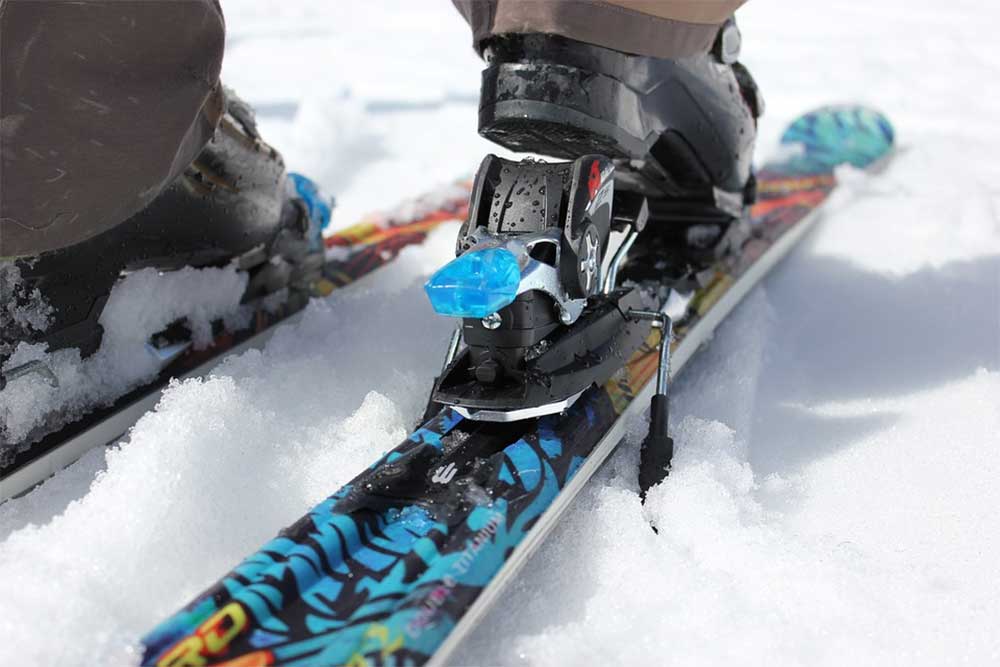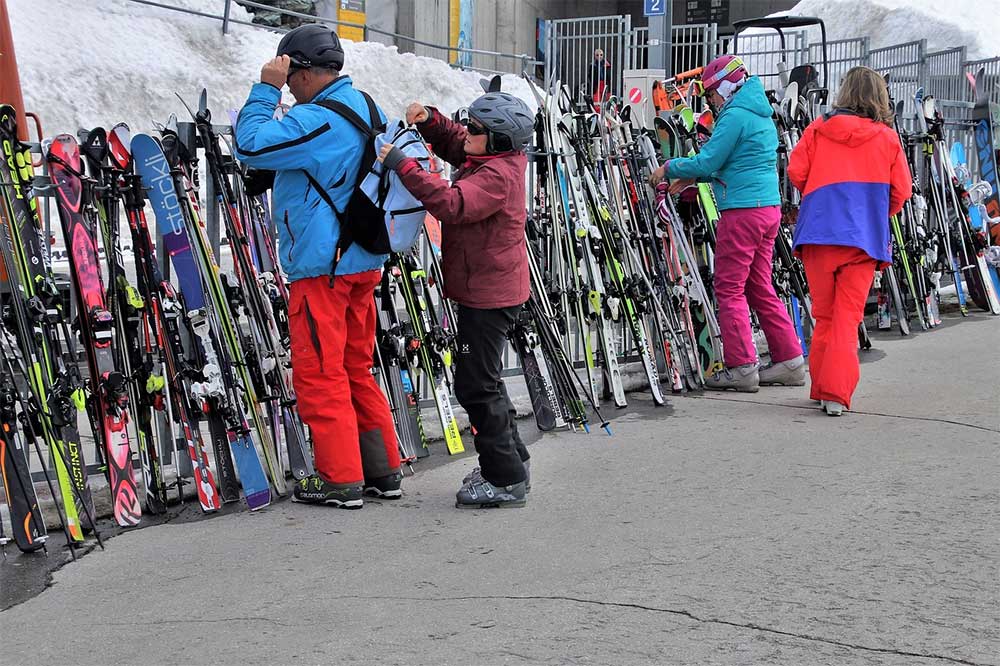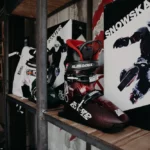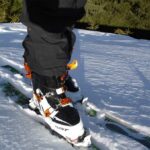When you think of the word ‘skiing’ you may imagine a procession of professional athletes as they glide across a snowy landscape, or traverse down the side of an icy mountain.
And although skiing can definitely be a fun and breathtaking experience, this does not mean that the recreational sport is particularly easy to take up.

Not only does skiing involve bravery, strength and endurance, but it also requires the correct equipment to be properly executed.
If you have ever been interested in pursuing skiing as a hobby, then chances are you have probably found yourself falling down a rabbit hole of winter boots and protective gear.
One piece of skiing equipment that often eludes beginners are the skis themselves, as they often come available in a range of shapes and sizes, with your preference for long or short skis often defining you and your practice. So what is the difference between long and short skis and which ones are the best for executing moves?
In this article, we are going to cover everything you need to know about ski length, as well as the various positives and negatives that come with using both long and short skis.
By following our informative guide, we hope that you will be able to find your perfect ski size, as well as define your personal preference when it comes to the equipment you use.
What Ski Size Should You Use?
Unfortunately, there is no magic spell or potion that can be used to find your perfect ski size, as that is something that only you can decide.
When it comes to selecting your ski size, you need to find a pair that delivers a comfortable fit, as well as a riding style that meets your own preferences and requirements.
Now there is no guarantee that you will find your perfect ski size right away, as for many recreational skiers the process can be a slow and difficult one.
However, if you are a first-time skier, then you should always choose a ski length where the top of the ski reaches the area between your chin and the top of your head.
If you are still confused about what ski size you should use, then we have included a size chart at the bottom of this article.
Why Should You Use Short Skis?
Although short skis may look strange and ineffective, this does not mean that they can’t be used as efficient skiing equipment. So to help outline the various reasons why you should use short skis, we have compiled the following lists:
Advantages Of Using Short Skis
- Small Turning Radius: One of the main advantages of using short skis is that they have a smaller turning radius than other sizes, which means they can be used to make sharp and easy turns. This can be particularly useful if you are a beginner who is still adapting to the sport.
- Faster Movement Reactions: Because short skis are smaller, this means they can react quickly to your movements, as the energy transfer has less distance to cover.
- More Lighter & Manageable: Short skis tend to be more lighter and manageable when used on hard snow, which makes them a popular choice among skiers who practice in parks and resorts.
Why Do You Need Short Skis?
- Good For Beginners: Short skis are particularly useful if you are a beginner, as they can offer more control.
- Promises Slower Speeds: If you prefer to ski at a slower speed, then short skis can help you to do this.
- Laidback Experience: If you do not consider yourself an aggressive skier, then short skis can make the overall experience more enjoyable.
- Good For Older Users: Short skis can be used by older skiers to help maintain their strength, speed and reflexes.
- Easier To Handle: Short skis are considered easier to handle on choppy or unpredictable terrain.
Disadvantages Of Using Short Skis
Unfortunately, short skis do come with some negatives, which can make the skiing experience more difficult and uncomfortable. So to help outline the various disadvantages of using short skis, we have compiled the following list:
- Turns Can Be Too Sharp: One of the biggest downsides of using short skis is that they can be difficult to turn when travelling at high speeds. This can result in sharp turns or a loss of control, which can lead to severe injuries to tendons and ligaments.
- Overall Lack Of Stability: Because short skis have a small distribution of weight and make less contact with the ground, they are often less stable than other sizes.
- They Don’t Float Well: Short skis do not float well in snow or powder, which can make controlling the skis more difficult if you stray from the path.
Why Should You Use Long Skis?
Long skis are often what people imagine when they think of skiing, and this is because they are a particularly popular size among professional skiers. So if you are wondering why you should use long skis, we have compiled the following lists to help you understand their various advantages:
Advantages Of Using Long Skis
- Larger Surface Area: Because long skis come with a large width, this also means that they have a greater surface area, which gives them more stability and flotation when travelling across deep snow or powder.
- Provide More Stability: Long skis often feature a long edge which makes them heavier than other ski sizes and this means that they have more contact with the ground, which provides more stability when travelling at higher speeds.
- Longer Turning Radius: Long skis generally come with a longer turning radius, which means they can take more time to fully turn. Although this can prove difficult in certain situations, it can also provide more momentum and speed when travelling across snow and fine powder.
Why Do You Need Long Skis?
- They Can Go Faster: If you are a seasoned skier, then chances are you will prefer to use long skis because of their speed and precision.
- Cover Larger Distances: As we have previously mentioned, long skis have a larger surface area, which makes them more capable of covering large distances, even when having to travel across fine powder.
- More Aggressive Experience: Long skis are perfect for aggressive skiers who don’t like to hold back during skiing sessions, as they are faster and more durable than smaller ski sizes.
Disadvantages Of Using Long Skis
Although long skis are often favored by professional athletes and seasoned skiers alike, this does not mean that they don’t come with their negative aspects. So to help you understand the disadvantages of using long skis, we have compiled the following list:
- Difficult For Beginners: As we mentioned in the section above, long skis have a larger turning radius, which can make them particularly difficult to control if you are a beginner still learning the craft.
- Need More Strength: Long skis can also be very difficult to turn if you don’t have enough strength, which can make the overall skiing experience both exhausting and uncomfortable.
Can You Wear Snowblades?

Snowblades, otherwise known as ski blades, are extremely short skies that bear more resemblance to ice skates than they do general skiing equipment.
And although they can be a lot of fun to use, especially if you are a beginner still finding your confidence on the snow, we do not recommend using them long-term or in a professional sense.
This is because they have a very small surface area, which makes them essentially useless when faced with conditions such as ice or fine powder.
What Size Skis Are The Fastest?
Currently, long skis are considered the fastest size available, as they can be used to create momentum and speed during skiing sessions, especially when they are used to travel in a downward direction.
Long skis are also known to produce less drag or vibrations when reaching higher speeds, which is something that cannot be said of shorter ski sizes.
How Tall Should Your Skis Be?
There is a common misconception that skis should always be taller than the skier, which is not entirely true. Although experienced skiers can often wear skis that are much taller than themselves, the same cannot be said for beginners, who will often prefer to use a short ski as they gain their confidence.
If you are a beginner skier, then we recommend using a ski that reaches your chin in height, as this will be easier for you to control.
What Skis Are Easier To Control?
When travelling at great speeds, long skis are considered easier to control, as they are less likely to throw you off balance as your turn. However, when it comes to travelling at lower speeds, short skis are considered more manageable.
What Skis Are Better For Beginners?
As we previously mentioned, short skis are regarded as the best for beginners, as they can provide more control and stability.
What Are The Best Skis For Children?
Children will usually benefit from using a short ski, which means a pair that reaches their chin in height. This is because these skis are considered easier to manage and slow down.
If you still are wondering what size ski you and your children need, then take a look at the size charts down below:
Children Ski Sizes
Height In Feet & Inches | Height In Centimeters (cm) | Recommended Ski Lengths (cm) |
3.1” | 70 | 80 |
3.3” | 80 | 90 |
3.6” | 90 | 100 |
3.8” | 95 | 105 |
3.9” | 100 | 110 |
4.2” | 110 | 120 |
4.4” | 115 | 125 |
4.6” | 120 | 130 |
4.8 | 130 | 140 |
Adult Ski Sizes
Height In Feet & Inches | Height In Centimeters (cm) | Recommended Ski Lengths (cm) |
4.4” | 132 | 115-130 |
4.6” | 137 | 125-140 |
4.8” | 142 | 130-145 |
4.10” | 147 | 135-150 |
5” | 152 | 135-155 |
5.2” | 158 | 145-165 |
5.4” | 163 | 150-170 |
5.6” | 168 | 155-175 |
5.8” | 173 | 160-180 |
5.10” | 178 | 165-185 |
6” | 183 | 170-190 |
6.2” | 188 | 175-195 |
6.4” | 193 | 180-200 |
- Types of Skiing Terrains: A Comprehensive Guide for Every Skier - December 6, 2024
- Skiing Nutrition: Essential Nutritional Advice and Meal Planning for Skiers - August 15, 2024
- Backcountry Skiing Explained: Essential Tips and Gear - August 8, 2024








